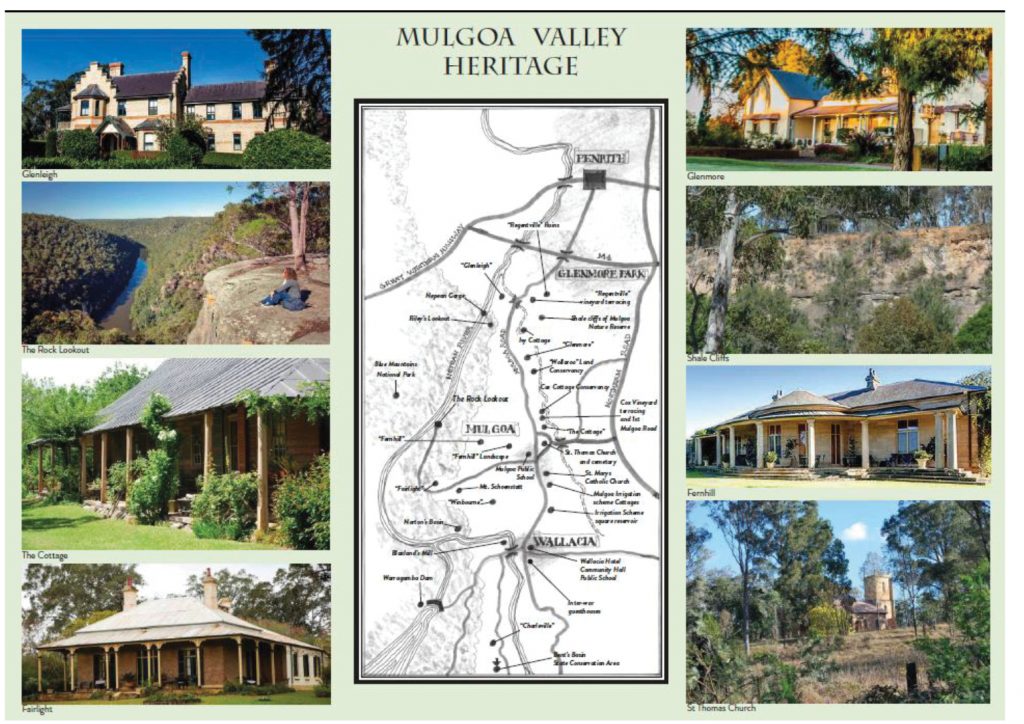Conserving the Mulgoa Valley for Future Generations
Patricia Barkley
Protecting the Western City District’s scenic and cultural landscape
By 2050, the rarest asset within the Greater Sydney area will be rural landscape: simple, uncompromised farming land. Sophisticated infrastructures of public space are needed, but they are built, renewed, replaced. Rural landscape, like wilderness areas, is as necessary to urban communities’ wellbeing as more structured amenities, yet it cannot be recycled, renewed or replaced.
The most innovative, permanent and beneficial contribution to Sydney’s public spaces would be the assured conservation and promotion of a unique area of outstanding natural and cultural beauty (A0NB) for the enjoyment and health of future generations.
Mulgoa Valley is the last unspoilt rural landscape in the Greater Sydney area and the richest in historic, cultural and natural sites. Established and protected in similar ways to the AONB sites in the UK, the well-defined Mulgoa Valley offers the potential for long term enjoyment of public space, well beyond that of site-specific projects.
The potential of such an AONB for active and passive recreation – walking, cycling, bird watching, visiting historic and natural sites (e.g. Fernhill) or simply appreciating scenery, wildlife or farm animals – is immense.
The foresight to preserve the rarest of open space in the Greater Sydney area for the enjoyment of future generations and their appreciation of our societies’ cultural and natural history would surely be seen (as the dedication of Centennial Park in 1888 now is) as innovative and exceptional.
For statements of the cultural and natural significances of the Mulgoa Valley, see Penrith City Council Scenic and Cultural Landscapes Study 2019.
